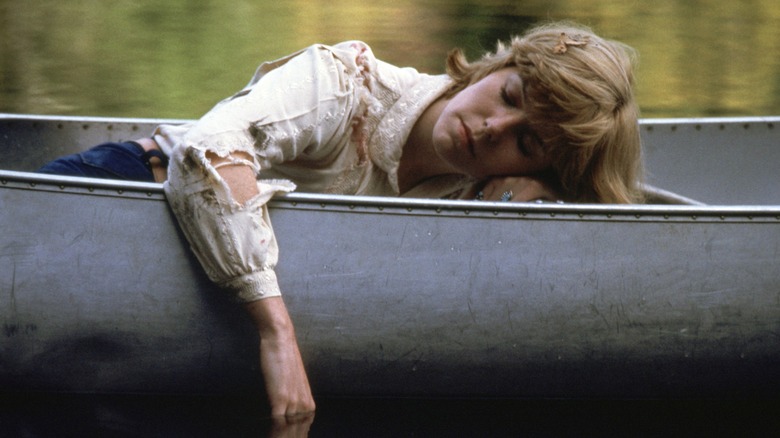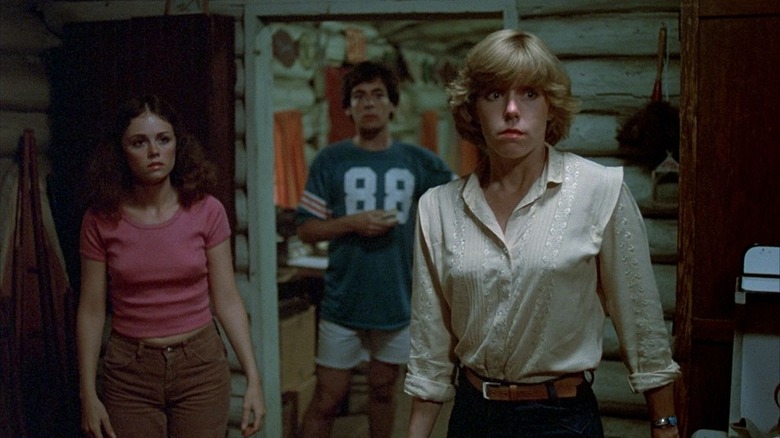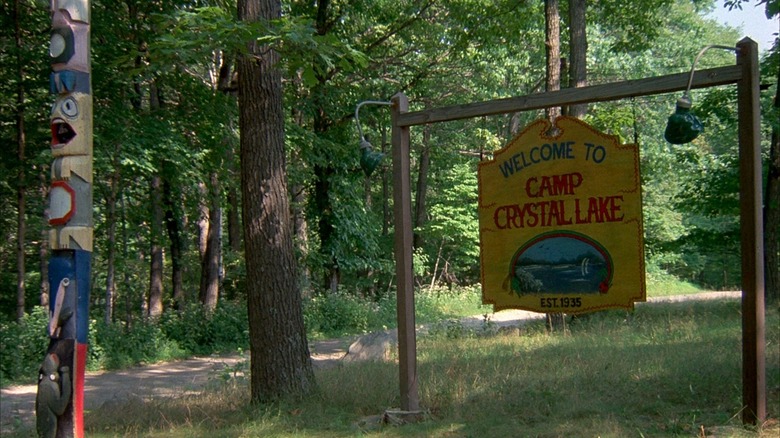How Friday The 13th's Director Went From Children's Movies To Cult Horror
"Friday the 13th" might be the best example of a flagrant copycat birthing a franchise whose place in cinema history is almost as significant as the thing it knocked off. Sidestepping the debate over what does and does not qualify as the first full-on slasher, it's generally agreed that 1978's "Halloween" set the mold for the horror sub-genre as it exists today. Blood-thirsty killing machines with penchants for pointy weaponry; horny teenagers and early 20-somethings with little to no sense of self-preservation; the unusual young woman who emerges as the "final" survivor in the battle with said monster — they're all present and accounted for in director John Carpenter and co-writer Debra Hill's spooky classic.
They can also be found in director Sean S. Cunningham and writer Victor Miller's 1980 hit "Friday the 13th," but with some major asterisks. For starters, the film that paved the way for Jason Vorhees to become a slasher icon infamously focuses on a different murderer. (Jason, the homicidal lunk that he is, wouldn't show up proper until the sequel and didn't even have his hockey mask until 1982's "Friday the 13th Part III.") Cunningham's movie is also closer to an honest-to-goodness chilling campfire tale like the yarns the doomed counselors at Camp Crystal Lake might spin than the hack-'em-and-slash-'em installments that would follow. You could even say it's suspiciously identical to the OG "Halloween" in that last respect.
By that I mean Cunningham and Miller have freely admitted to stealing from Carpenter and Hill's trailblazing horror flick like there's no tomorrow. For Cunningham, in particular, this was a desperate gambit to get his career back on track after he'd directed a pair of children's movies that, while not incontrovertibly disasters, didn't have studios knocking on his door, eager to hire him.
Friday the 13th wasn't Cunningham's first horror rodeo
Cunningham's gear-shift wasn't unprecedented like that time Wes Craven abruptly hopped off the horror beat to go make the 1999 Meryl Streep music education drama "Music of the Heart." Prior to his summer camp murder-fest, Cunningham specialized in sleazy fare, helming the shoestring sexploitation romps "The Art of Marriage" and "Case of the Full Moon Murders." He was also, as it just so happens, responsible for giving Craven his big break by hiring him to handle multiple tasks behind the scenes on the filmmaker's 1971 sex mockumentary "Together" (though Craven is simply credited as an associate producer). This would lead to Cunningham's first horror credit as a producer on the latter's feature directorial debut a year later with the 1972 rape-revenger thriller "The Last House on the Left" (one of Craven's best films).
It was at this point that Cunningham decided to swerve, directing the kid-friendly sports comedies "Here Come the Tigers" and "Manny's Orphans" back-to-back in 1978. Both films are as formulaic as they come, focusing on a down-on-his-luck coach who's cornered into taking on a team of young, misfit underdogs and turning them into winners. "Here Come the Tigers," in particular, was a brazen knockoff of 1976's "The Bad News Bears," as critics were quick to point out. To quote the opening of Janet Maslin's review for The New York Times, "If stock were carbon paper the 14th or 15th copy of 'The Bad News Bears' might resemble 'Here Come the Tigers' [...]."
As Cunningham explained to Uproxx for its 2015 "Friday the 13th" oral history, he actually liked "Manny's Orphans," but it "got optioned by United Artists and I didn't have any money coming in because of it, so I couldn't go back to my investors." His solution? Make a scary movie on the cheap.
Friday the 13th was a ripoff that worked
Miller, who lived near Cunningham at the time, didn't beat around the bush when it came to recounting how the pair wound up working on "Friday the 13th" together. "He called me and said, ”Halloween' is making a lot of money, let's rip it off,'" the writer told Uproxx. He continued, noting that much like Cunningham's failed attempt to ride the same wave as "The Bad News Bears," he, too, was in need of a job as the '70s drew to a close. So, rather than resist the tide ushered in by "Halloween," they elected to go with the flow:
"It was clear from the experience with the two G-rated movies that America did not want as many G-rated movies as they wanted horror. Basically, I was just trying to survive and so was Sean. We were facing what is best known as the condition of being penniless. And so I went and saw 'Halloween' and figured out how to write a horror movie and that was that. It's kind of mundane in its basic outlines."
It worked, though. "Friday the 13th" grossed $59.8 million at the box office, more than 100 times its budget. Various directors went on to pump out eight sequels over the next 13 years, with a 10th entry, "Jason X," and a crossover, "Freddy vs. Jason," following in the early '00s. Save for the 2009 reboot, though, it's been radio silence for the series on the big screen ever since due to a legal battle between Cunningham and Miller concerning the rights. As of the writing, even a possible "Crystal Lake" TV series has run afoul of problems. Much like a certain drowning victim, though, one suspects the brand will come bursting back to life just when you think it's down for good...


